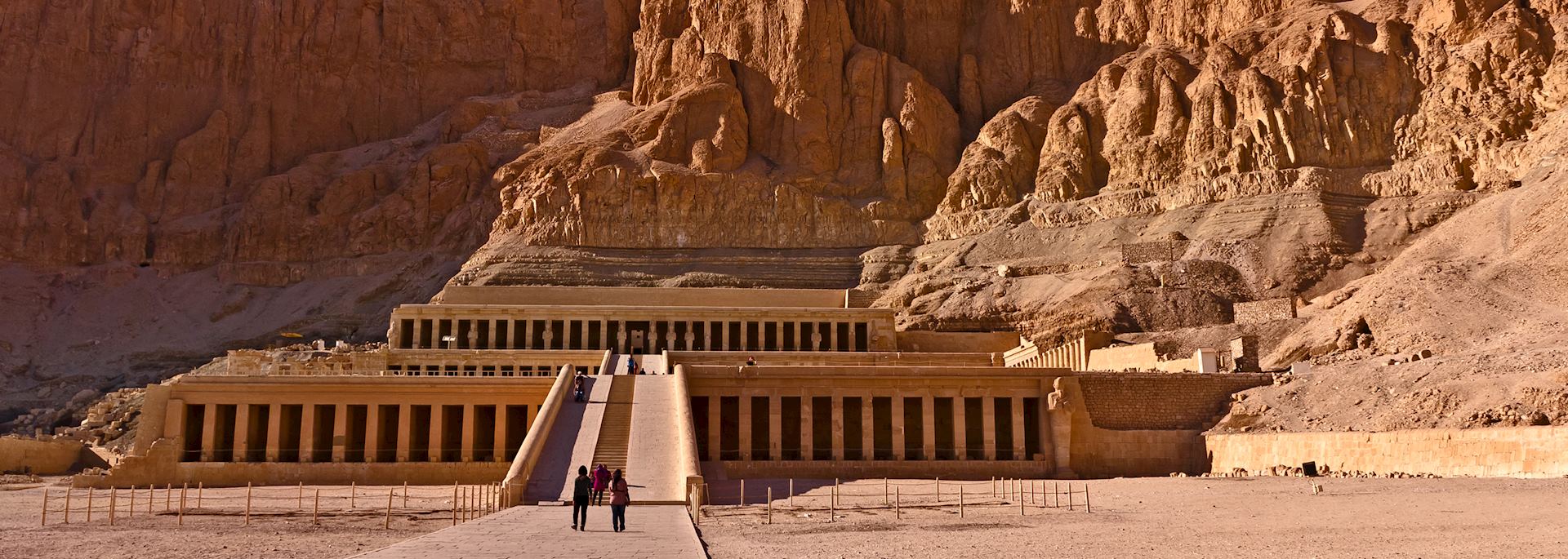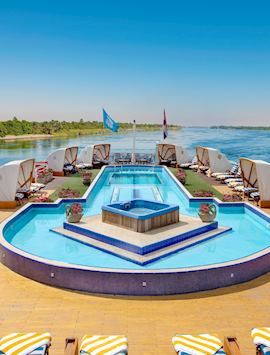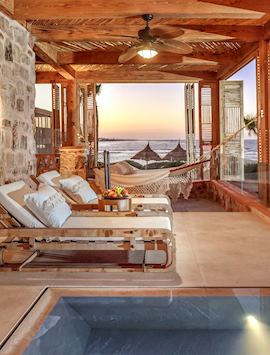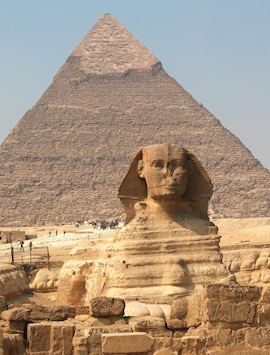By Egypt specialist Hannah
Built in the 13th century BC, the temples of Abu Simbel have stood as an enduring tribute to the marriage of Ramses II and his (best beloved) wife, Nefertari. That makes the Temple of Hathor quite possibly the oldest monument to marital love and, I think, a great landmark to include in your Egyptian honeymoon.
While your honeymoon will be created just for you, most trips to Egypt follow a similar path as you visit the highlights — Cairo and its nearby pyramids, followed by a Nile cruise to see the ancient temples, including Abu Simbel. I also like to include some down time at a luxe resort on the Red Sea, to help couples unwind. Here’s what a trip might look like.
Day 1: landing in Cairo
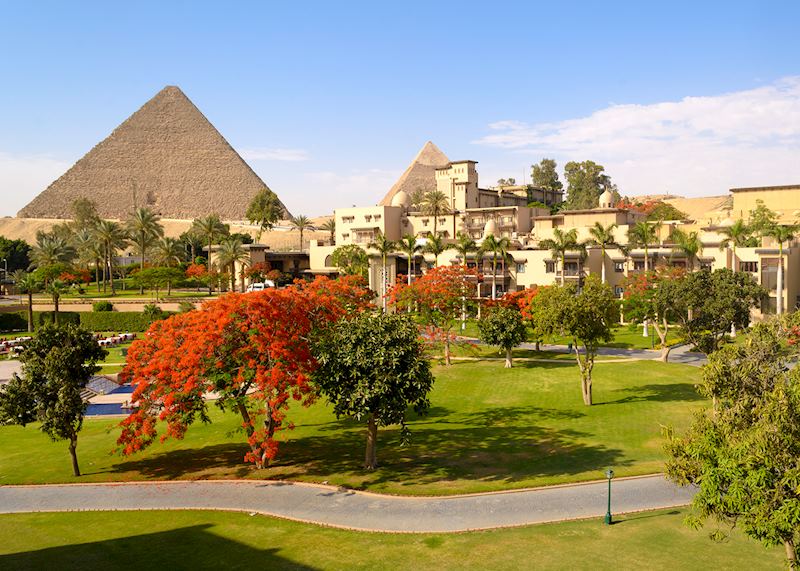
You’ll be met by one of our partners in Egypt, who can help you ease your way through the bureaucracy at the airport. Then, your private driver will whisk you away to your hotel. I love to put couples in a suite at the Marriot Mena House. There are more indulgent hotels in the city, but none with a view like Mena House — from your balcony, you’ll have unimpeded views of the Giza pyramids almost right on your doorstep. It’s also quieter than many of the other hotels in the city.
Unpack, recover, and have some private time in the sprawling room — you can opt for dinner on the balcony, which I highly recommend. The pyramids are due south of the hotel and you can watch the setting sun move along their slopes as you ease into your Egypt trip.
Day 2: the pyramids
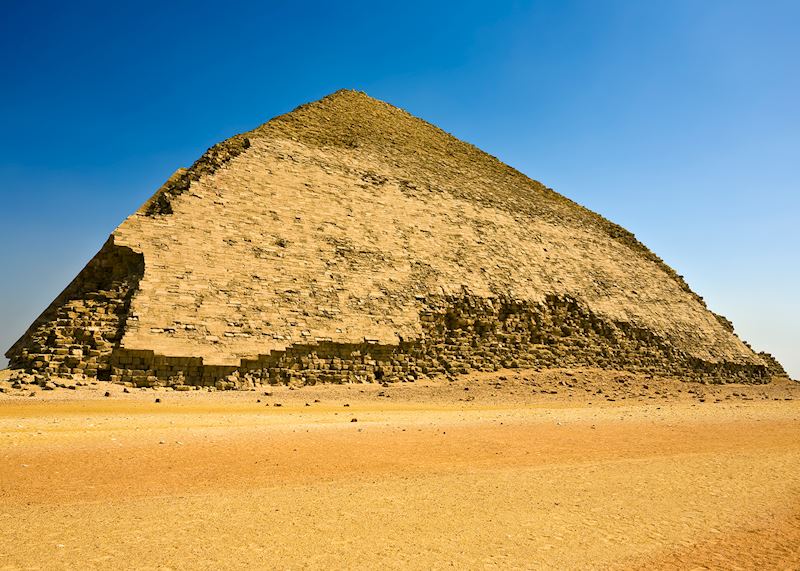
After a lazy breakfast, you’ll meet your driver and private Egyptologist guide for your visit to Giza, Saqqara, and Dahshur. You’ll have the same expert guide the whole time you’re in Cairo and they’ll get to know what you’re interested in, so they can tailor their explanations around you, specifically.
You’ll see the Bent Pyramid, which owes its crooked silhouette to the fact that it was one of the earliest pyramids ever, and then climb inside the Red Pyramid before moving on to see the stepped pyramid of Saqqara. The culmination of the day will be a return to Giza to explore the Great Pyramid and its two siblings.
As the sun goes down, Cairo’s souqs explode in a riot of sights, sounds, and scents — shining multifaceted lanterns, hawkers selling brightly dyed slippers, cafes redolent with shisha smoke. It’s easy to get lost in the chaotic tangle of narrow streets, so I’ll arrange a guided tour of the city’s biggest souq, the Khan El Khalili. You’ll have the chance to soak up the hectic atmosphere and try your hand at haggling for keepsakes before you head to Naguib Mahfouz for a traditional Egyptian dinner. This is one of the city’s best-known eateries and shisha bar, named after the renowned novelist who lived nearby.
Day 3: the Egyptian Museum & a food tour
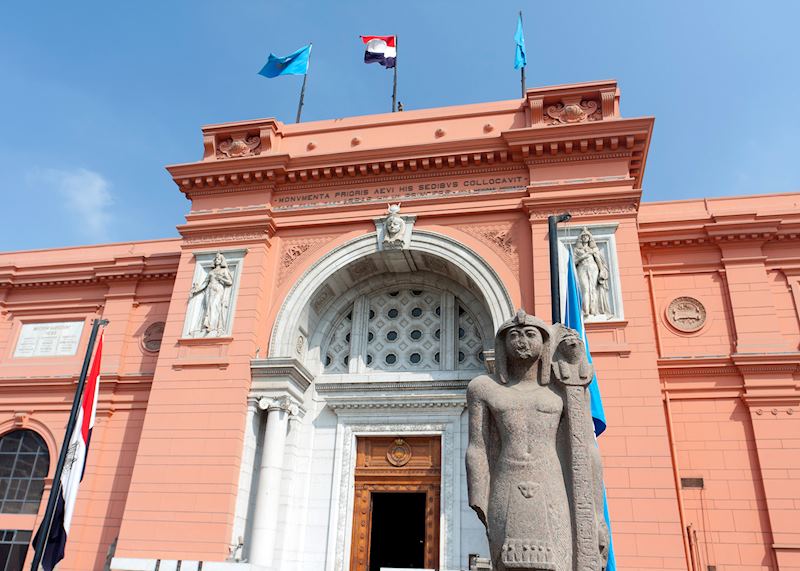
Rejoin your guide to spend your morning at the Museum of Egyptian Antiquities, which most people just call the Egyptian Museum. This is the oldest museum in the Middle East and houses the largest collection of pharaoh-related treasures in the world. (The Grand Egyptian Museum will house an even larger one, once it opens — its ever-moving opening date is an elusive matter, however.)
From there, you’ll move seamlessly into an extended lunch by way of a Cairo food tour. I think Egyptian cuisine is tragically overlooked and a food tour will give you the chance to explore hole-in-the-wall eateries that you’d likely never find on your own.
Day 4: Abu Simbel and Aswan
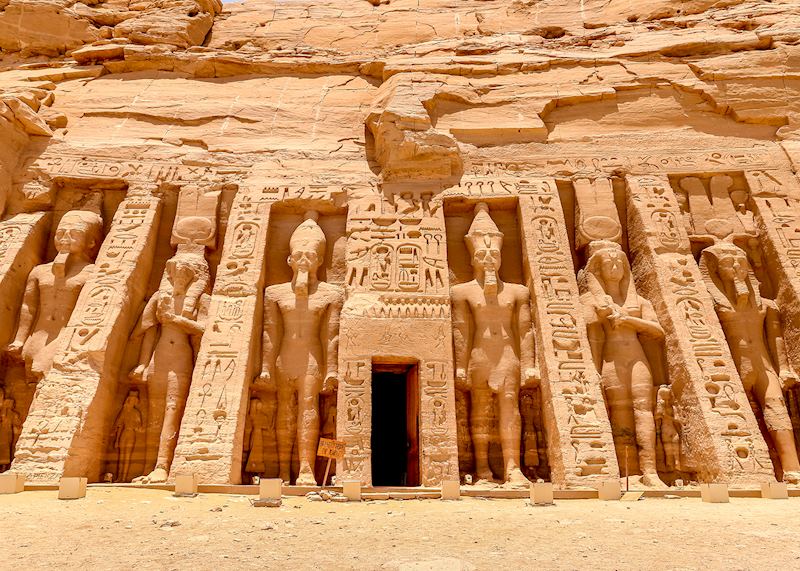
Your driver will take you to the airport for the brief hop to Abu Simbel and its three temples for a private tour. These are grandiose monuments, each an outsized tribute to Ramses II’s immense ego, but, as I said before, I’m particularly fond of the Temple to Hathor.
The entrance is guarded by soaring statues of Ramses and Nefertari, who is dressed as the goddess Hathor. Notably, her statue is just as tall as his, which is rare in ancient Egypt, where wives and concubines were literally diminished to knee height in most depictions.
From here, you’ll head to Aswan for one night in this quiet riverside town. For a honeymoon, I suggest spending the night in Sofitel Legend Old Cataract Hotel. A landmark since the Victorians arrived here, the Old Cataract is a lovely vintage hotel with a storied pedigree — Agatha Christie wrote Death on the Nile here, waiting for her Egyptologist husband to return from the desert.
While you can still stay in her suite (if it’s available), I suggest instead opting for the new wing, which has more spacious rooms and modern style but excellent views of the lovely old wing.
Day 5: cruising the Nile
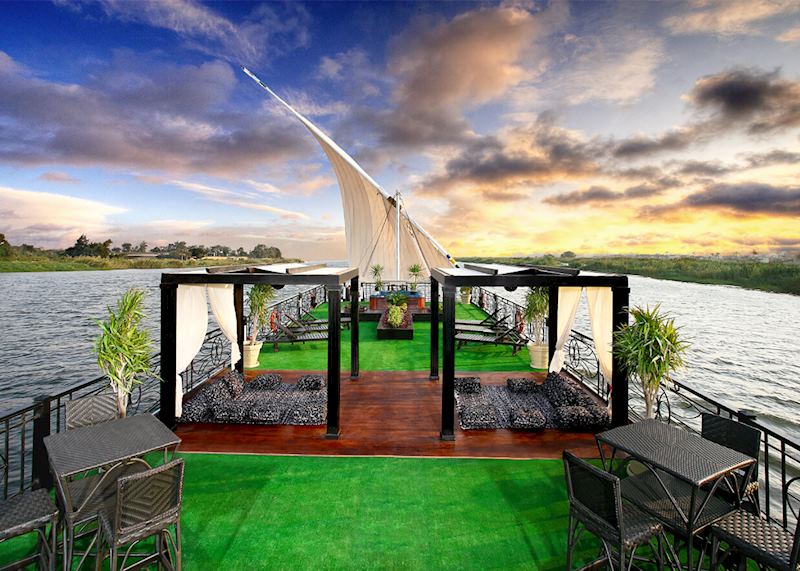
Since before the days when Ramses commissioned the Temple at Luxor, a cruise on the Nile has been the best way to explore Egypt’s ancient culture. While we can’t arrange a pharaonic barge, you have several options for an indulgent honeymoon river cruise.
If you prefer intimacy, you can opt for a private dahabiyya, one of the many traditional sail-powered boats that have plied these waters for centuries. Elegantly appointed in a vintage style, Emeco’s fleet of three offers the chance for an intimate cruise with just eight cabins. For complete indulgence, you can also have the whole ship to yourself.
For a more conventional and indulgent cruise, consider opting for the Oberoi Zahra. With just 25 cabins and two suites, it’s still an intimate experience, but the ship is large enough to have more comforts than you’ll find on a dahabiyya, including a massage spa, swimming pool, and lounge. The cabins all have generously sized windows for uninterrupted views and if you opt for a suite, you’ll have a private Jacuzzi.
After settling into your cabin, you’ll visit the Aswan High Dam and the Temple of Philae, which was dedicated to Isis. From there, sail on to Kom Ombo and the Temple of Sobek and Haroeris — dedicated to two gods, it’s a twinned temple with symmetrical entrances, hypostyles, and sanctuaries.
Day 6: the Temple of Horus in Edfu
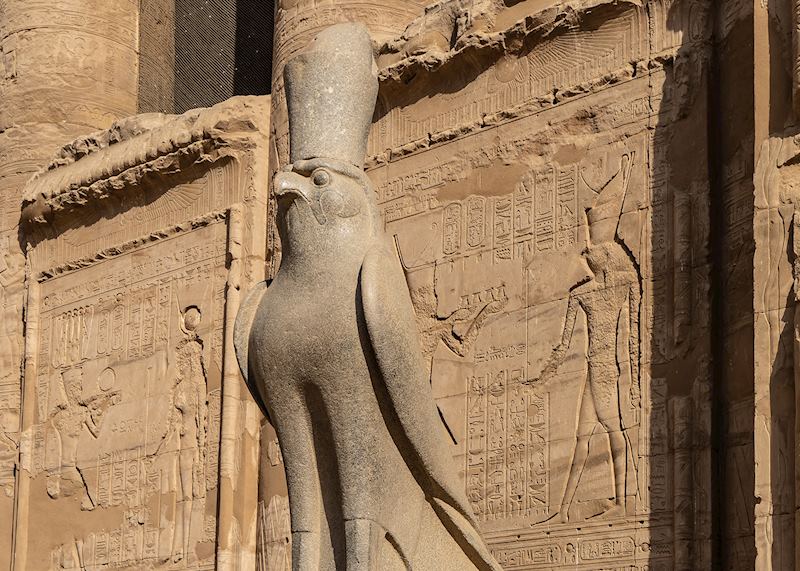
In the morning, you’ll visit Edfu to see the Ptolemaic-era Temple of Horus. Relatively modern by Egyptian standards, this temple only dates to about the 3rd century BC, and it’s one of the best preserved sites in the country. Entering through the imposing gateway — guarded by two large statues of falcons — you’ll pass through courtyards, halls, and hypostyles, ending in the sanctuary of Horus where a golden statue of the god once stood.
Returning to your ship, you’ll continue along the Nile, admiring the landscape as it scrolls by. The scenery here is timeless, with farmers in their green fields, animals drinking from the river, and the desert in the distance — I always find it easy to imagine that this is what the ancient Egyptian rulers saw when they sailed the same route. (Unless you’re lucky enough to have a daylight passage through the lock at Esna, which is a marvel of late 20th-century engineering.)
Day 7: Luxor
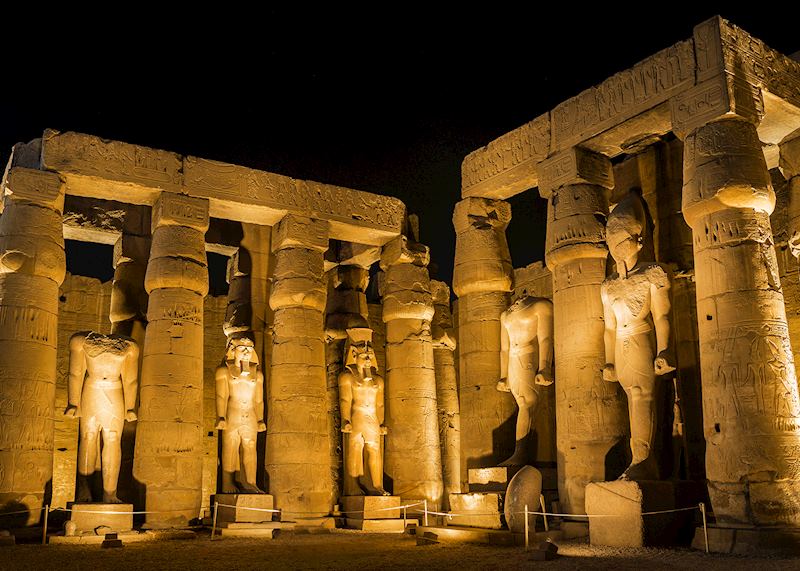
Watching the sun rise over Luxor is the climax of any Egyptian trip. This was the most important city in the kingdom for thousands of years and the great obelisks, temples, and hidden tombs only hint at the vast reach of the rulers who built it.
The Egyptians ordered their cities according to their cosmology and so the important sites for the living — the complex of Karnak and the Temple of Luxor — are on the east bank, where the sun rises. And on the west bank, where the sun died, you’ll find the necropolis, where the tombs of kings, queens, and everyday people are tucked into hidden wadis, protected from tomb raiders.
I suggest starting on the west bank so you can visit the east bank’s Luxor Temple in the evening — the hypostyle hall is particularly evocative when it’s lit up at night.
Day 8-10: the Red Sea
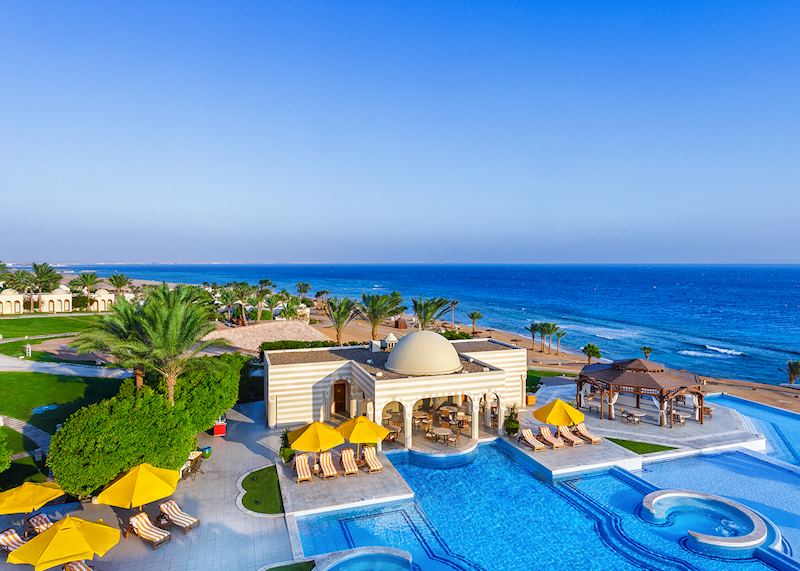
Most couples want some down time at the end of their trip — somewhere indulgent to unwind, where they won’t feel compelled to do things. For those couples, I suggest including a few days at the Oberoi Sahl Hasheesh, an opulent resort perched on a private beach on the Red Sea.
There’s very little to do here, so you can simply relax by the pool and enjoy the attentive service. All the suites are in private villas. You can opt for one of the suites with sweeping views of the ocean and a private pool for an entirely decadent end to your honeymoon.
The food here is excellent, with three restaurants that serve a mix of Middle Eastern cuisine and more international fare. I had a fiery tikka masala at the Indian-themed Zaafran — the spicy bite wasn’t for the faint of heart, but the rich and tangy yogurt sauce perfectly balanced the heat and allowed the chargrilled taste of the chicken to shine through.
If you still have energy enough to do something beyond lie by the pool, the Red Sea is one of the best-kept secrets in the underwater world. There’s a PADI facility if you want to dive, but I opted to go snorkeling instead, with a private guide who helped me identify what I was seeing. I’ve never seen so many species in one place, including hawksbill turtles, sea anemones, clown fish, silvery jackfish, toothy barracudas, and giant oysters bigger than my head.
Read more about honeymoon trips to Egypt
Start thinking about your experience. These itineraries are simply suggestions for how you could enjoy some of the same experiences as our specialists. They're just for inspiration, because your trip will be created around your particular tastes.
View All Tours in Egypt
